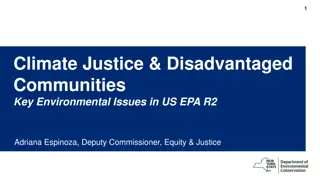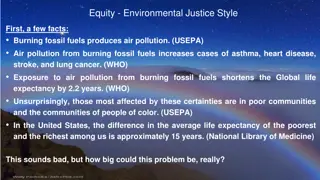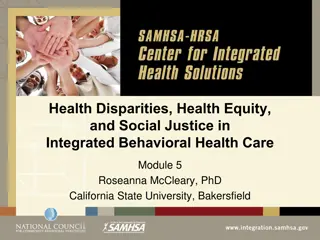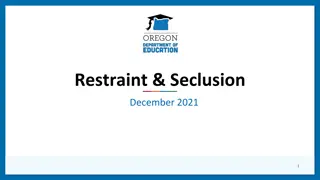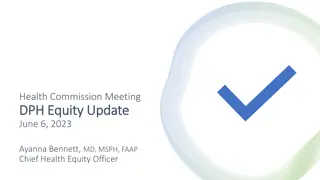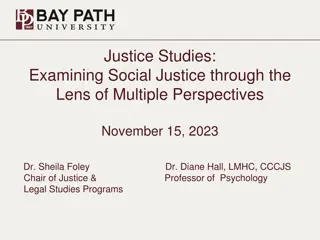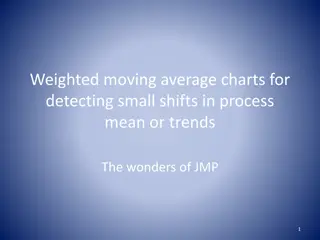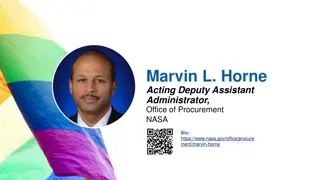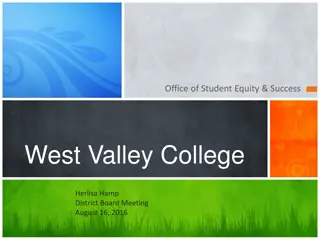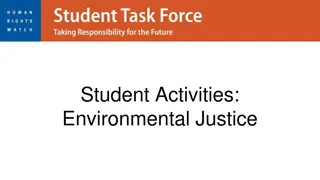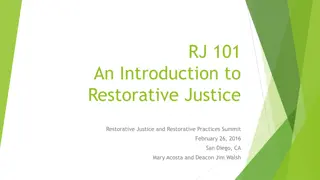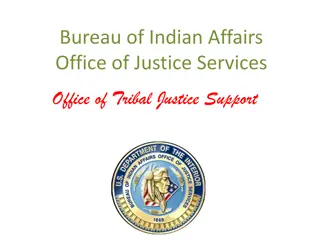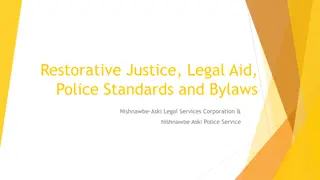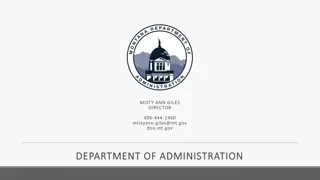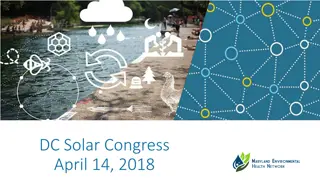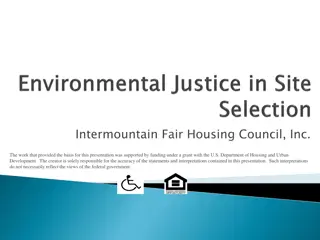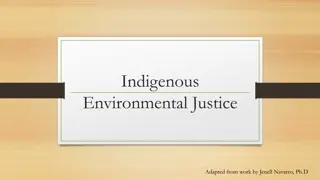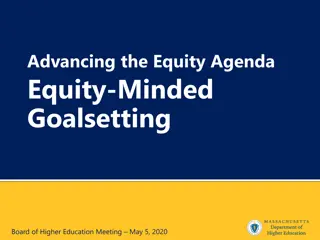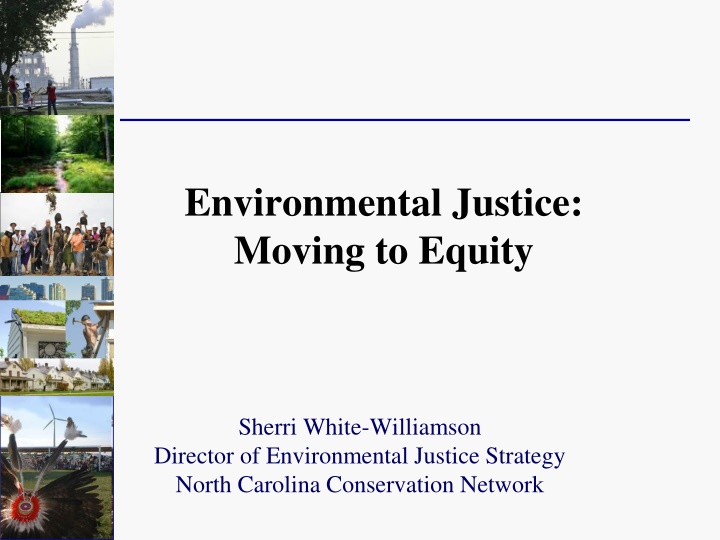
Environmental Justice: Moving to Equity - Key Events and Initiatives
Discover the evolution of environmental justice towards equity, highlighting important events from Warren County protests to national studies confirming the impact of siting on marginalized communities. Learn about the shift from fair treatment to meaningful involvement regardless of race or income, culminating in the People of Color Environmental Summit in 1991.
Download Presentation

Please find below an Image/Link to download the presentation.
The content on the website is provided AS IS for your information and personal use only. It may not be sold, licensed, or shared on other websites without obtaining consent from the author. If you encounter any issues during the download, it is possible that the publisher has removed the file from their server.
You are allowed to download the files provided on this website for personal or commercial use, subject to the condition that they are used lawfully. All files are the property of their respective owners.
The content on the website is provided AS IS for your information and personal use only. It may not be sold, licensed, or shared on other websites without obtaining consent from the author.
E N D
Presentation Transcript
Environmental Justice: Moving to Equity Sherri White-Williamson Director of Environmental Justice Strategy North Carolina Conservation Network
Roadmap Difference between Environmental Justice and Environmental Equity Important Events in Environmental Justice Opportunities to Engage
Environmental Justice EPA has defined Environmental Justice as the fair treatment and meaningful involvement of all people regardless of race, color, national origin, or income as the administration develops, implements and enforces federal laws, regulations and policies. 3 3
The Beginning of a National Movement 1982 -- Warren County, North Carolina Protests of construction of hazardous waste landfill near Warrenton, North Carolina State planned to bury 400,000 cubic yards polychlorinated biphenyls (PCBs) contaminated soil Location chosen from 90 sites across state
Studies Confirm Relationship between Siting and Socio-economic Status 1983 US Government Accounting Office report Siting of Hazardous Waste Landfills and Their Correlation with the Racial and Socio-economic Status of Surrounding Communities 3 out of 4 hazardous waste facilities in southeastern U.S. were located in predominantly African-American communities African American population only one-fifth or region s population Race was the most significant variable: income a distant second
Studies Confirm Relationship between Siting and Socio-economic Status 1987 United Church of Christ (UCC) Commission for Racial Justice national study Toxic Waste and Race in the United States Race most significant variable 3 out of 4 hazardous waste facilities located predominantly in low income and minority communities Race the most significant variable: income a distant second
PEOPLE OF COLOR ENVIRONMENTAL SUMMIT 1991 - Washington, DC First National People of Color Environmental Leadership Summit October 2002 Washington, DC Attracted over 1,400 participants (planned for 500)
U.S. EPA Office of Environmental Equity Recommended by the EPA Environmental Equity Work Group any effort to address environmental equity [justice] issues effectively must include all segments of society: the affected communities, the public at large, industry, people in policy-making positions, and all levels and branches of government. Established in 1992 Name changed to Office of Environmental Justice after hearing from community members
Studies Confirm Relationship between Siting and Socio-economic Status 1992 -- National Law Journal Unequal Protection: The Racial Divide in Environmental Law http://www.ejnet.org/ej/nlj.pdf Study of EPA s Superfund enforcement database
Presidential Action Executive Order 12898 Federal Actions to Address Environmental Justice in Minority Populations and Low Income Populations Issued by Pres. Bill Clinton on Feb. 11, 1994 Directed federal agencies to consider environmental justice in their programs and policy decision Established the Interagency Working Group on Environmental Justice
Studies Confirm Relationship between Siting and Socio-economic Status Toxic Wastes and Race at Twenty, 1987-2007: Grassroots Struggles to Dismantle Environmental Racism Commissioned by the UCC Justice and Witness Ministries Issued on the 20th anniversary of the 1987 report Mirrored previous two reports Shows greater racial disparities in the distribution of hazardous waste sites
Reinvigorating the EJ IWG Sept. 2010 Cabinet heads met to recommit to EJ Dec. 2010 White House Forum on Environmental Justice Feb. Nov. 2011 15 additional community meetings held across the country
Biden Administration Commitment to Environmental Justice Executive Order 14008 Tackling the Climate Crisis at Home and Abroad Justice40 Initiative DOJ Enforcement Strategy Executive Order 14096 Revitalizing Our Nation s Commitment to Environmental Justice for All White House of Environmental Justice
Biden Administration Makes Historic Investments in Environmental Justice Thriving Communities Technical Assistance Centers (TCTAC) EPA EJ Thriving Communities Grantmaking Program Thriving Community Change Grants
N. C. Environmental Justice Engagement May 2018 NC DEQ EJEAB Appointed October 2023 Gov. Cooper signs EJ Executive Order establishing the Environmental Justice Advisory Council
Community Engagement August 1, 2024 Virtual meeting August 15, 2024 Asheville, NC August 22, 2024 Warrenton, NC August 29, 2024 Clinton, NC
THANK YOU sherri@ncconservationnetwork.org


